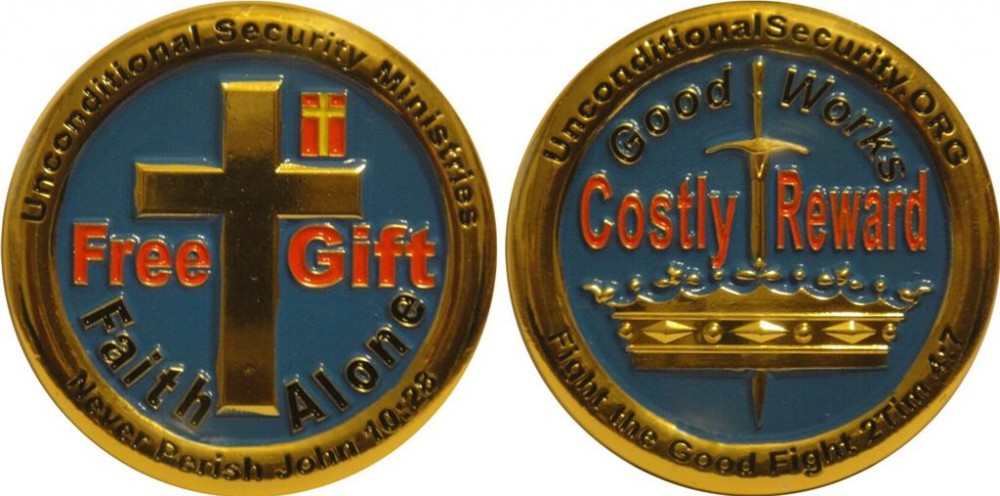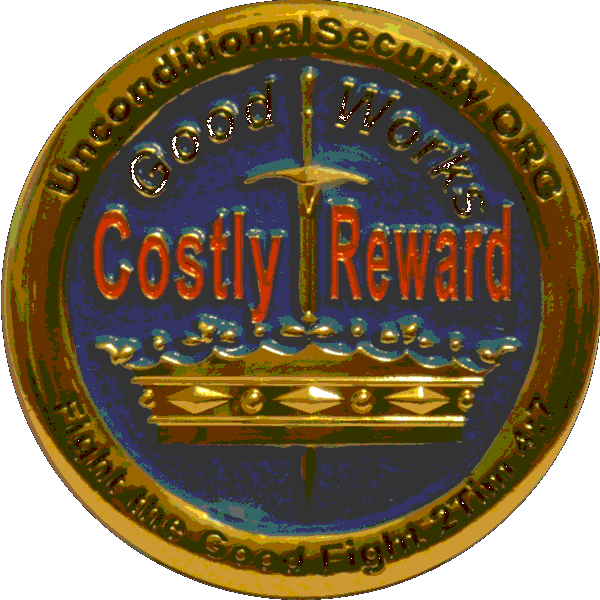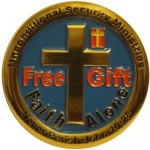Two Sides of the Same Coin
The front of the coin represents the gift of eternal life that is purchased by the blood of Christ and offered freely to those who trust in Christ for eternal security. Thereupon received, the possession of this gift is unconditional. Not even the cessation of faith would be able to diminish the everlasting nature of this bestowal.
One of the most beloved passages in this connection is Jn 10:28, cited at the bottom of the coin. Granted, conditionalists will deride this citation, claiming that such security is conditioned on continuous following in Jn 10:27. Such claims have been shown to be mistaken in The Race of Grace. Securitists are fully justified in citing this verse in support of their position. Among other passages used to demonstrate unconditoinal security, The Race of Grace also makes a very strong argument from Jn 6:37-40 in favor of unconditional security.
The second side of the coin cites 2Tim 4:7 as a popular passage pertaining to rewards. By successfully fighting the good fight, believers can earn the crown of righteousness as their reward. Separating the crown from the gift allows one to make the necessary distinction between receiving and retaining eternal life as a gift versus earning greater quantitative experiences of that life as a reward. However, rather than cite a passage that entertains the possibility of receiving eternal life as a reward, 2Tim 4:7 was chosen so as not to confuse the novice. Those new to the discussion will be better able to distinguish eternal life as a gift from the crown of rightfulness as a reward.
My books demonstrate how eternal life can be both a gift and reward without doing violence to the law of non-contradiction in that two different aspects of life are under view. See my various graphs of eternal life. Two different dimensions of eternal life are in view. In a similar fashion, conditionalists often assert that faith and works are two different sides of the same coin. Of course, Jam 2:14-26 is then cited as proof. Making faith and works two sides of the same coin is not the problem. The error arises when faith and works are made two different sides of the same soteric coin. What must be discerned instead is that faith and works are two different sides of the same mistholic coin.
This two-sided coin is necessary for rewards within heaven, not for entrance into heaven. To enter heaven, one need only trust in Christ for unconditional security. To have rewards in heaven, one must thereafter fight the good fight. First receiving eternal life as gift is necessary before one can start developing one’s capacity to experience that life abundantly as a reward. Misthology requires soteriology. Therefore, it is fitting that a mistholic coin emphasizes the soteric dimension. Without a firm soteric foundation, misthology is worthless. Just so, this coin would be worthless in promoting the kingdom message pertaining to rewards if it did not first relate how to enter the kingdom by means of trust in the finished work of the cross of Christ.



